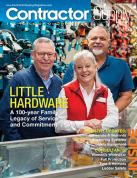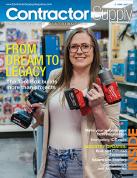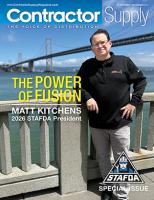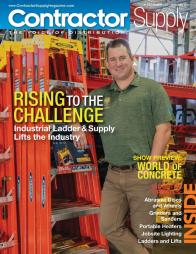Respirable silica dust protection: Are you in compliance yet?
Bosch's Jim Bohn answers common questions about working with concrete tools and dust extraction systems.
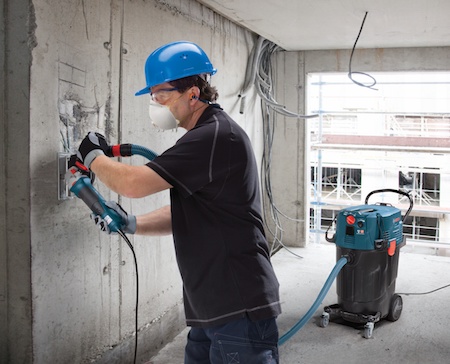 |
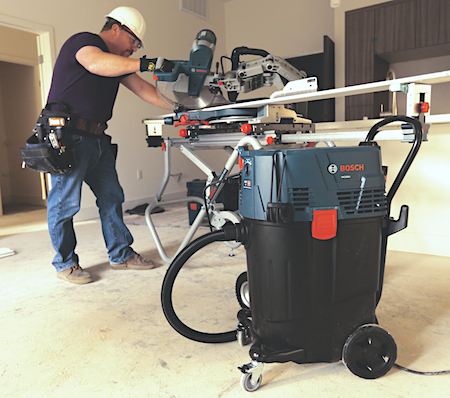 |
The OSHA regulation outlining requirements for exposure to respirable silica dust has been in place for months. But not every organization has taken the steps necessary to meet the guidelines. This is a reminder that every company that works with concrete, stone or other masonry materials must meet the OSHA requirements.
Jim Bohn, Director of Strategic Development for Robert Bosch Tool Corporation, answers some frequently asked questions.
1. What if you’re working in a small area where the dust suction attachment won’t fit?
Dust exposure, regardless of the environment, must be controlled. If you’re in an environment where your power tool system is too big, then Table 1 will not be applicable and Paragraph D will take effect.
This will require a company to conduct independent testing, with specific documentation on exposure levels and what steps a worker must take to stay below the PEL (0.5mg/m3: 50 micrograms per cubic meter) over a time-weighted eight-hour day.
2. Can you use tools from one brand and an attachment from a different brand?
Most tool brands have attachments that fit their tool(s) due to specific design elements of the tools (e.g., rotary hammer tube size variations, collar configuration on a grinder, etc.) Most attachments are brand specific. The exceptions are dust suction drilling attachments and universal collar dust shrouds.
3. Can a dust extractor (vacuum) from one brand be used with another brand of tools and attachments?
Yes, but you do need to be sure that these three requirements are met: 1) Minimum of 25 CFM per 1" of grinder wheel, 2) Filter cleaning system (automatic or semi-automatic), and 3) 99% filtration filter (HEPA is preferred). Also, does a branded tool system require any other specification – refer to the appropriate Owners Manual.
4. What is the proper disposal procedure for concrete dust?
Every user who creates respirable silica dust must understand their responsibility in the collection and also disposal of silica dust. It’s highly recommended to use a fleece bag. These are usually multi-ply fabric bags that help manage air equilibrium and collect .3 microns or larger dust particles. It also contains a port-closing mechanism for containment after removing the bag from the vacuum canister’s port. Finally, it’s strong enough to withstand weight of dust collected and is not subject to tearing.
5. Will there be a special place for users to dispose of a full dust collection bag separate from a regular dumpster?
Take the bag (80% full) and place it in a standard garbage dumpster. Be careful that it’s not going to be exposed to potential damage if other items are placed in the same dumpster on top of it. The bag must not break open at any time.
6. Are HEPA filers required in Table 1?
“HEPA” filters are not required. The OSHA Silica Dust Regulation – Table 1, states that a filter needs to have 99% filtration to meet the guideline. Many non-HEPA filters meet this standard, but may not withstand the frequency of dust extractor filter cleaning that’s required due to fineness of silica dust clogging the filter (if not cleaned often). Use a HEPA filter 1) so OSHA agents know its filtration is rated 99% effective, 2) it offers greater durability versus a standard filter, and 3) saves money in the long term.
 7. Is there a limit for length of a vacuum hose?
7. Is there a limit for length of a vacuum hose?
Bosch dust extractors can be used with either a 10 Ft. hose (which comes with the unit) or with a 16 Ft. hose (sold separately). Beyond 16 Ft. the expected efficiency of the dust extractor decreases greatly. Users may have dust control performance issues beyond 16 Ft.
8. What about jobsite dust from surrounding work areas?
How can this be distinguished from cutting/grinding operations? Dust generated in and around the jobsite must be compliant with the established control plan for that site. Anything levels that exceed the dust control plan should be reported immediately. It doesn’t matter who creates the dust, everyone must be safe from exposure. CS
Jim Bohn is director, strategic development – North America for Robert Bosch Tool Corporation. He is responsible for driving the creation and rollout of Bosch power tool products in the U.S. and Canada. In addition, he assists the company’s sales organization in providing the products, services and training programs to meet the needs of construction professionals.







